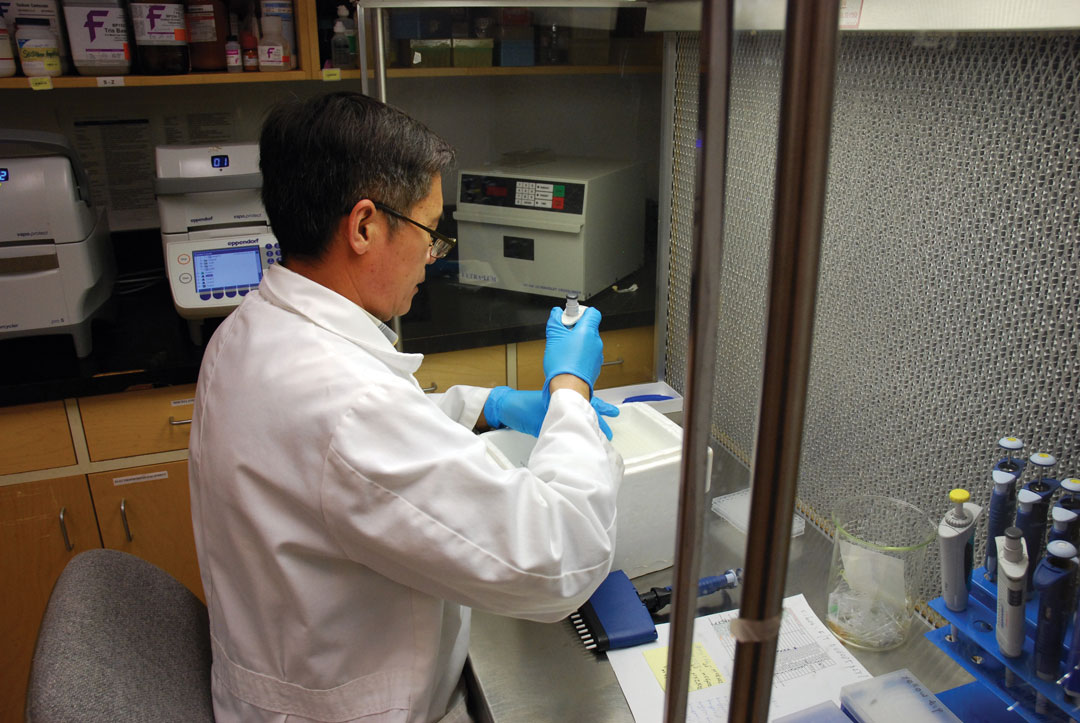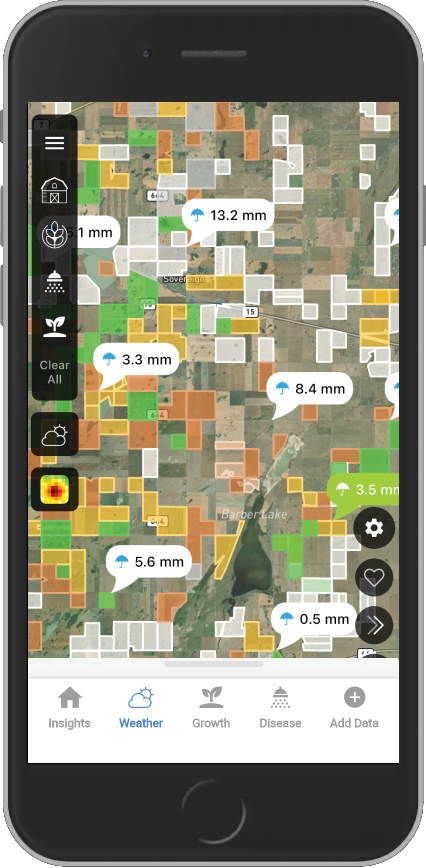WHAT’S IN A GENOME?
FOR PLANT BREEDERS, THE ANSWER IS “PLENTY OF REVEALING DATA”
BY SARAH HOFFMANN
A new software program allows Alberta scientists to use fragments of the barley genome—known as DNA markers—to improve and accelerate barley variety development. A genome is the complete set of genetic material present in a cell or organism.
Rong-Cai Yang, a biostatistician cross-appointed at Alberta Agriculture and Forestry and the University of Alberta, built the Barley Breeding Platform (BBP). This Excel-based software program combines phenotypic information (observable characteristics of a variety, such as yield, disease resistance and height) with genotypic information (the genetic determinant of these observable traits).
Traditionally, plant breeders selected and crossed varieties that had desirable phenotypic traits. Several generations of selecting the best lines would lead to a variety that displayed consistent qualities in the field. With the mapping of the barley genome, however, molecular biologists and plant breeders can now see which DNA markers in the genome influence certain plant traits.
Yang brought the phenomic and genomic data together into a database that can filter through the information and find the most promising barley lines to grow in test plots.
Yang said that instead of growing all potential barley lines in the field, this database allows breeders to focus on growing the lines that have certain required genetic markers for traits like yield, disease resistance or malting quality. With access to the marker information, breeders do not have to wait until the end of the growing season to select for lines with better yield and quality.
“If we can develop a reliable DNA marker panel, you can make a reliable selection earlier. This shortens the breeding cycle,” said Yang. Currently, it takes about 12 years to bring a new barley variety to market. Yang is hesitant to provide a concrete estimate, but suggested three to four years could be shaved off this process once breeders can fully utilize the software for marker-aided selection in their breeding programs.
Flavio Capettini is one of the barley breeders based at the Field Crop Development Centre (FCDC) in Lacombe where the BBP launches this spring. As head of research at the FCDC, he knows that time saved equals money saved.
As he pointed out, genomics research began in the 1980s, but the testing was too expensive to integrate into plant breeding. Like most technology, genomics became more affordable over time. “It’s been a long evolution until now, where, for evaluating many traits, it becomes less expensive to use the lab than the field,” said Capettini.
In the lab at the FCDC, molecular biologist Jennifer Zantinge is applying new technologies to speed up and reduce the cost of genetic screening by analyzing several barley lines with multiple genetic markers simultaneously. In the past, biologists analyzed one piece of DNA with one genetic marker at a time.
Zantinge said genetic markers reveal layers of detail beneath the characteristics observed in the field. For example, not all varieties that appear resistant to a certain disease are created equal. “The problem with doing phenotyping in the field is we don’t know where the resistance for that disease is coming from,” she said.
A variety with multiple resistant genes has a more durable resistance, meaning it will likely take more generations for the resistance to break down than in a variety with only one type of resistant gene. “We’re trying to pyramid a number of resistance genes into one line,” said Zantinge.
The BBP was funded in part through the provincial-federal initiative Growing Forward 2. After further development and integration of the platform into the barley breeding program at the FCDC, the team said there will be opportunities for cross-application with other crops.







Comments